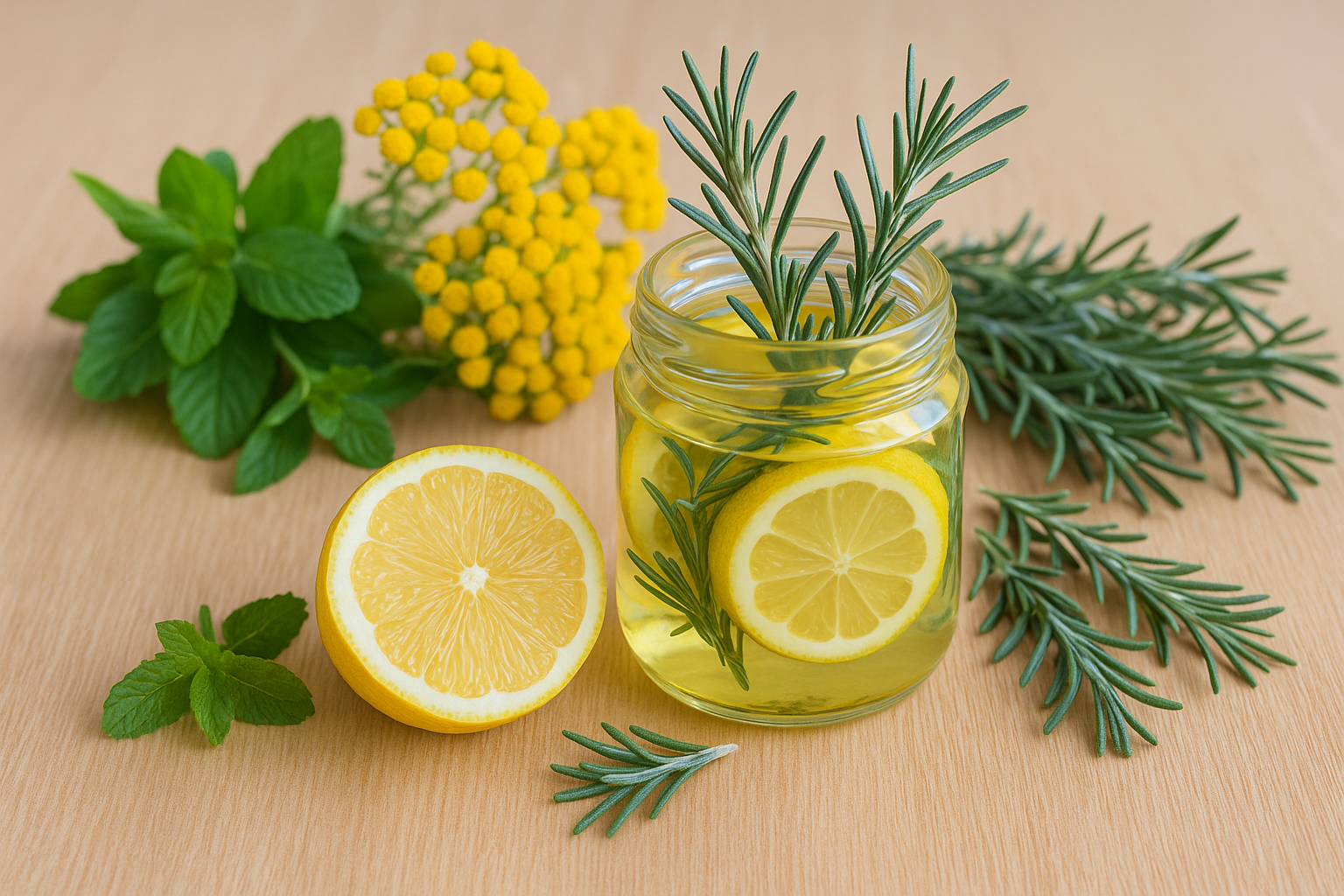Artificial air fresheners dominate modern homes. Supermarkets sell sprays, plug-ins, and scented candles that promise comfort.
Yet behind these products are chemicals that pollute indoor air and often cause allergies. There is a healthier, cheaper, and more cultural alternative: native herbs from Southern Brazil.
Gaúcho families have always used plants like marcela, carqueja, rosemary, and boldinho to perfume their homes.
These herbs are natural, renewable, and deeply tied to tradition. With simple methods, they can fully replace industrial fresheners.
This article explores how native herbs provide fragrance, health benefits, and cultural meaning while keeping daily life simple.
Why Avoid Artificial Air Fresheners
Hidden Chemicals
Most commercial fresheners contain volatile organic compounds. These chemicals mask odors but also irritate lungs. People with asthma or children often feel the effects first.
Short-Lived Fragrance
Sprays may smell strong at first, but the scent fades quickly. Companies design them this way to increase consumption. Herbs, on the other hand, release aroma naturally over time.
Environmental Cost
Plastic containers, aerosols, and chemical waste harm the environment. Native herbs grow locally, requiring no packaging or transport.
Why Native Herbs Are Better
Natural Fragrance
Herbs produce authentic aromas. Marcela releases calm sweetness. Rosemary sharpens freshness. Boldinho perfumes with mint-like clarity. These scents feel real, not synthetic.
Healing Benefits
While freshening air, herbs also support health. Carqueja cleanses. Guaco eases breathing. Rosemary boosts focus. Air fresheners only mask odors, herbs improve wellness.
Cultural Value
Using herbs connects daily life to Gaúcho traditions. Every sachet or spray carries memory. Homes smell not of chemicals but of heritage.
Practical Methods to Replace Air Fresheners
Herbal Sachets
Cloth sachets filled with dried marcela or rosemary freshen wardrobes and drawers. They last for months and are easy to renew.
Bowls of Fresh Leaves
Placing boldinho or rosemary in small water bowls spreads fragrance naturally. Kitchens and bathrooms stay fresh without sprays.
Herbal Sprays
Infuse herbs in water and a little alcohol. Strain and bottle in spray containers. Rosemary and marcela make a calming spray for bedrooms. Boldinho and sage create a refreshing mix for living rooms.
Simmer Pots
Boil herbs in water on the stove. Marcela flowers, rosemary sprigs, and orange peels perfume the entire house. The aroma lasts for hours and feels natural.
Herbal Bundles
Dried bundles hung in kitchens or windows release fragrance when air passes. Carqueja and rosemary together bring freshness and protection.
Ritual Burning
White sage bundles are burned to cleanse negative energy. The smoke purifies air while spreading a strong herbal scent.
Step-by-Step Recipes
Marcela Calming Spray
- Collect marcela flowers and dry them.
- Infuse in boiling water for 20 minutes.
- Mix with a spoon of alcohol to preserve.
- Place in a spray bottle.
Use in bedrooms to promote relaxation.
Rosemary Focus Spray
- Crush rosemary leaves.
- Infuse in warm water with lemon peel.
- Strain and bottle.
Spray in study areas to sharpen focus.
Boldinho Mint Sachets
- Dry boldinho leaves until crisp.
- Place in small cloth bags.
- Add lavender if available.
Keep in closets for a refreshing aroma.
Sage Cleansing Bundle
- Tie white sage branches with cotton string.
- Hang to dry for two weeks.
- Light and let smoke circulate.
Use during cleaning rituals to refresh air and energy.
Rooms and Suitable Herbs
Bedrooms
Marcela promotes calm and sleep. Rosemary supports memory. Sachets under pillows help relaxation.
Kitchens
Boldinho refreshes after cooking odors. Rosemary sprigs on windowsills spread aroma when wind blows.
Bathrooms
Carqueja sachets reduce humidity smells. Sprays with mint or boldinho clean the air.
Living Rooms
Guaco spreads a sweet herbal aroma that soothes visitors. Simmer pots with marcela and citrus add warmth.
Workspaces
Rosemary and sage sprays keep focus high. Bowls of dried herbs near desks improve clarity.
Scientific Support for Herbal Use
Research confirms that many herbs contain essential oils with antimicrobial and aromatic properties. Rosemary oil improves cognition. Marcela contains flavonoids with calming effects. Sage smoke reduces airborne bacteria.
These findings prove that herbal air fresheners are not only cultural but effective. They cleanse, refresh, and heal simultaneously.
Mistakes to Avoid
Overuse of Fresh Herbs
Too much moisture from fresh leaves can cause mold. Always dry herbs well before long-term storage.
Forgetting to Replace Sachets
Herbs lose fragrance over months. Renew sachets every three months to maintain strength.
Mixing Too Many Scents
Balance is key. Choose three herbs at most for sprays or bundles. Too many aromas create confusion.
Ignoring Safety
Burning sage produces smoke. Always ensure ventilation. Essential oils must be diluted before skin contact.
Cost Comparison
A bottle of commercial spray lasts weeks. A small pot of rosemary lasts years. Growing herbs is cheaper, sustainable, and gives continuous fragrance.
Even if bought in markets, dried herbs cost less than artificial products. And they offer health benefits alongside aroma.
Cultural Memory and Identity
For Gaúcho families, herbs are more than tools. They are companions of memory. The smell of marcela recalls Easter harvests. Rosemary symbolizes family kitchens. Sage smoke represents cleansing.
Replacing artificial air fresheners with herbs means reviving these memories. It transforms a house into a cultural home.
Expanding Herbal Use Beyond the Home
Herbal sprays can be carried in bags to refresh offices or cars. Sachets work in drawers or luggage. Boldinho water bowls freshen balconies. Sage bundles cleanse new spaces before moving in.
The same traditions adapt easily to modern needs. Herbs become portable, practical, and timeless.
Conclusion
Native herbs from Southern Brazil are perfect replacements for artificial air fresheners. They are natural, safe, sustainable, and deeply cultural. With marcela, carqueja, rosemary, boldinho, guaco, and sage, homes smell authentic and healthy.
Herbs not only perfume the air but also heal and preserve tradition. Replacing chemicals with plants means replacing emptiness with meaning. It is a choice for wellness, culture, and the future.

Marcela Cardozo is passionate about Southern Brazilian traditions and the cultural stories carried through natural scents. She blends knowledge of native herbs, essential oils, and regional rituals to create practical and inspiring content. Her writing connects ancestral wisdom with modern living, offering readers simple ways to bring authenticity, well-being, and meaning into their everyday lives.
